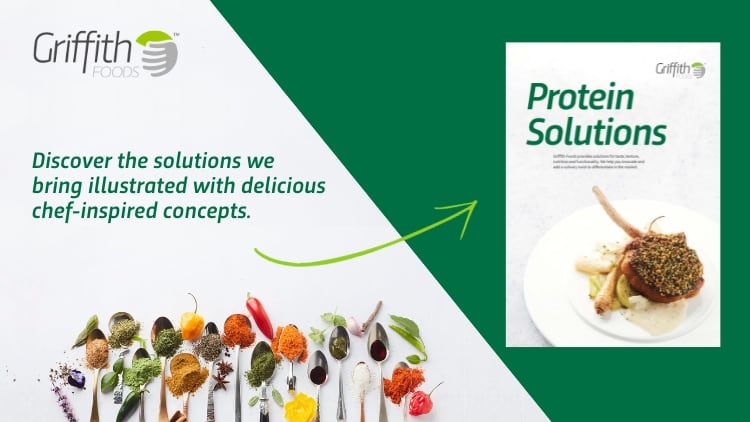Achieving sustainability across the food industry is a complex and daunting task.
With the global population projected to grow by almost two billion over the next three decades, finding a balance between increasing food production and preserving the environment is crucial.1
Rising demand for food has led to more intensive farming methods which can lead to soil degradation and environmental damage. Alongside declining soil health, continual and excessive use of chemicals pollutes groundwater, risking both human and animal health.
An urgent factor driving the need for sustainability is climate change. The World Health Organization has already warned that it presents a “fundamental threat to human health”, and with food production accounting for 26% of global greenhouse gas (GHG) emissions, it is crucial that the food industry take action, now.2,3
Regulations play a key role in shaping more sustainable practices within businesses. At the heart of the European Green Deal, for example, the Farm to Fork Strategy aims to redesign the food system to ensure food security, prevent food waste and mitigate climate change by reducing GHG emissions.
Concerted efforts within the industry are required in order to align with global sustainability goals and to ensure a resilient and productive food system.
No one food company or producer can solve the challenge of sustainability in the food supply chain alone. Collaboration and commitments along the value chain are necessary to create impact. But how to get started? And how can sustainability be sustained in the long-term?
Sustainability – actions above words
By working closely with farmers, suppliers, and customers, Griffith Foods, a global food product developer, is supporting a sustainable food system network. Founded in 1919, the company operates in over 40 countries creating customised products and leveraging scale to positively impact the food supply chain.
As a global leader in product development offering solutions in seasonings, sauces and coatings, Griffith Foods is making positive strides in sustainable food systems. The company, whose underlying purpose is to ‘Blend Care and Creativity to Nourish the World’, has unveiled its new sustainable business strategy – ‘2030 Aspirations’ – which is the company’s action plan to nourish the world.
Within it, a key aspiration is about driving positive influences across the supply chain encompassing crops, ingredients and suppliers. Through its global teams, the company works closely both with its growers and suppliers.
“Our focus is on the entire food system network,” says Madeline Patterson Smith, Griffith Foods’ Global Director of Sustainability Reporting. “When we consider a sustainable food system, we are looking at how we evolve our nutritious and sustainable portfolio. We can then fill gaps in markets with more nutritious and sustainable food in ways which are currently missing.”
“Whether that is optimising nutrition to support with health conditions, or those who are economically underserved and lack access to nutritious foods, we have an opportunity to influence in a positive way,” says Patterson Smith. “Our sustainability strategy brings that purpose to life.”
And every improvement that Griffith Foods makes will, by default, benefit its customers. “By working with us, our customers are benefiting our farming communities,” says Patterson Smith.
“Whether it’s an oregano or parsley grower in the UK or a chilli farmer in India – these communities are benefiting from sustainable practises. Adding positive nutrition and reducing non-nutritious elements is a further benefit for our customers – and in turn, the end consumer – that we are committed to.”
Supply chains and ingredients
To date, Griffith Foods requests all suppliers complete a full spectrum EcoVadis assessment covering environmental, social and governance standards; more than 83% of its suppliers (by spend) in the EU have achieved an EcoVadis medal, demonstrating a strong management system that addresses sustainability criteria.
Ensuring that the ingredients sources are sustainable is part of this. The company’s targets by 2030 are ambitious: to ensure that 80% of ingredients will be sustainably sourced; and a goal to have one million acres globally on the path to regenerative farming, 120,000 of that within the European business.
“When we talk about ‘sustainably sourced’, it means ingredients that are Certified Sustainable or grown under regenerative practices validated according to our Griffith Foods Framework. We consider all areas of the sustainability spectrum to promote good practise. We want to be that catalyst for change,” says Arnaud Le Guen, VP Sustainability Europe at Griffith Foods.
“We are continually asking how we can drive more sustainability across our suppliers and the ingredients that we source. We also go a layer deeper to the farmers and consider how we are impacting at a crop level.”
“By partnering with our Terova business unit, we also have an opportunity to work with thousands of farmers around the world to implement certified, sustainable cultivation programs across a broad range of spices, herbs and botanical crops,” says Le Guen.
“Driving efforts with our partners, such as EcoVadis, allows us to enhance and improve sustainability performance and engagement across our supply chain. In addition, we are engaging with suppliers to define a mutual net-zero pathway – many are committed to achieve net zero before 2040. Our goal is to improve on those commitments by leveraging more external assessment and validation such as the SBTi [Science Based Targets Initiative] to build a sustainable food system.”
Improved nutrition for global communities
Aligning nutrition and sustainability in its portfolio is another focus within the company’s sustainability vision. By continually improving on positive nutrition – adding ingredients such as fibre and optimising the nutrition of alternative protein products, for example – Griffith Foods is future-proofing its planet-friendly promise to its customers and, ultimately, the end consumer.
“Nutriscore has become the most trusted platform for assessing the nutritional profile of products in the EU, and HFSS compliance in the UK. Our collaboration with customers has become a key strategic pillar for driving innovation and enhancing nutrition in both our products and those of our customers,” says Le Guen”
“We bring our nutritionists into the early product development phase to offer alternatives that deliver the same taste but with increased nutritional benefits, such as nutritional fibre, whilst meeting the latest EU regulations,” says Le Guen.
“If we can improve nutrition with an ingredient that is sustainably sourced or regeneratively grown, this is the best-case scenario, the sweet spot.”
“We recently launched over a dozen new product lines in the Alternative Protein landscape across Europe with established customers and new startups. Major retailers across the EU are emphasising the importance of plant-based products and we see this as an opportunity to ensure that products are going to be affordable for consumers, they will taste good, appeal visually, be nutritious and excite the marketplace because, from what we’re seeing, this is where products can fall short,” says Patterson Smith.
Collaboration and partnerships
Collaboration is the key ingredient to leverage scale and achieve best practises across each step of the supply chain. It plays a critical role in influencing the sustainability credentials of a finished product – how an ingredient is grown at the farm level, the sustainability within that supply chain, the delivery to customers, and then onto the consumer.
As businesses face pressures to address social and environmental concerns, working as a food system to incorporate sustainability is vital. By partnering with a company which operates sustainably at scale, with nutrition at the fore, the benefits can be experienced not only on a commercial level but ripple out around the world.
“We are committed to collaborating more and better with our partners, be they customers, suppliers, NGOs or external stakeholders. Many of our goals will be delivered not only within our supply chain but also those beyond our own boundaries,” says Le Guen.
Find out more about Griffith Foods’ Sustainability Journey and how to join.
References
1. United Nations. Population.
2. World Health Organization. Climate change.
3. Our World in Data. Environmental Impacts of Food Production.








